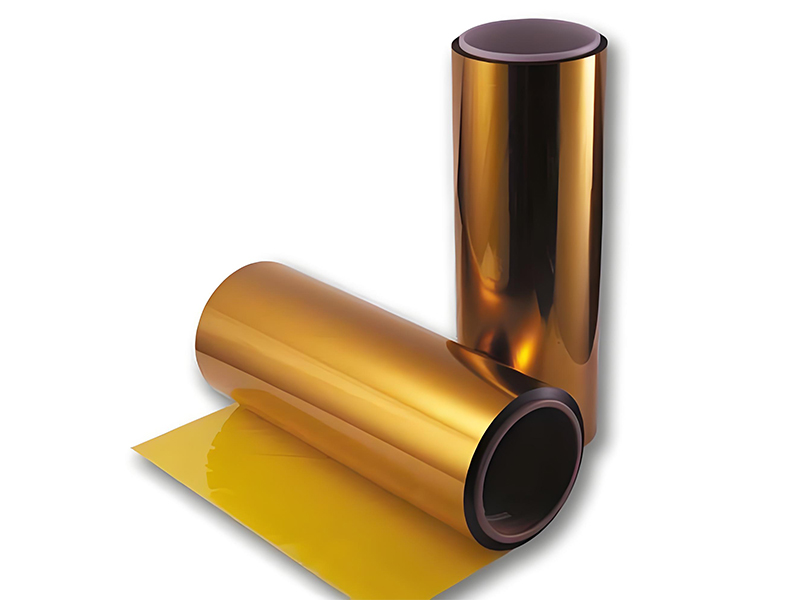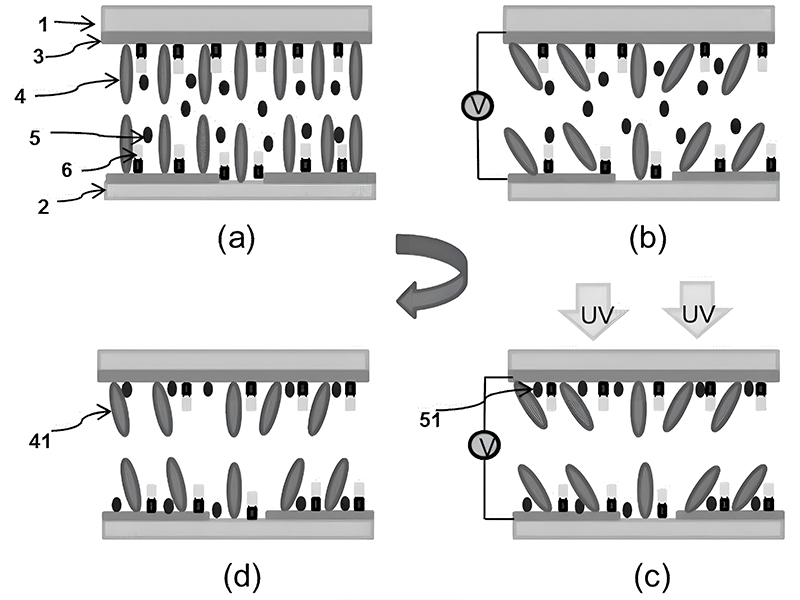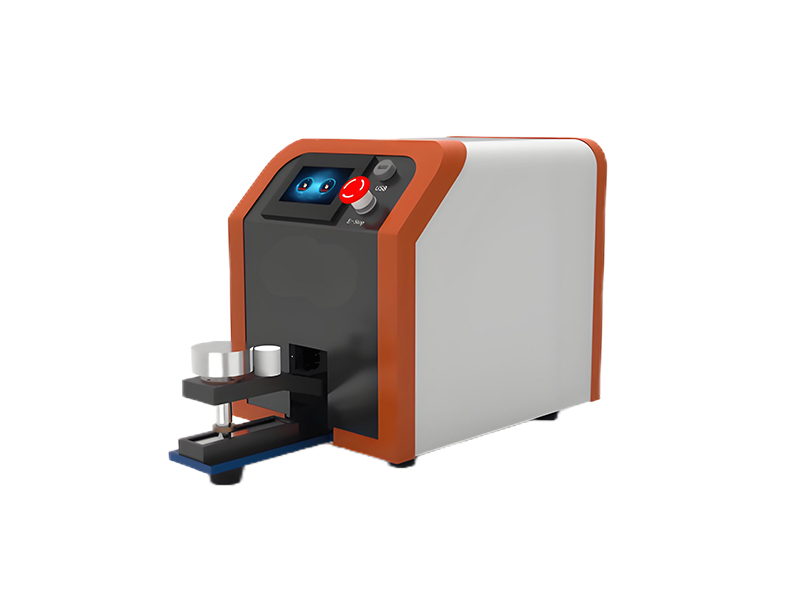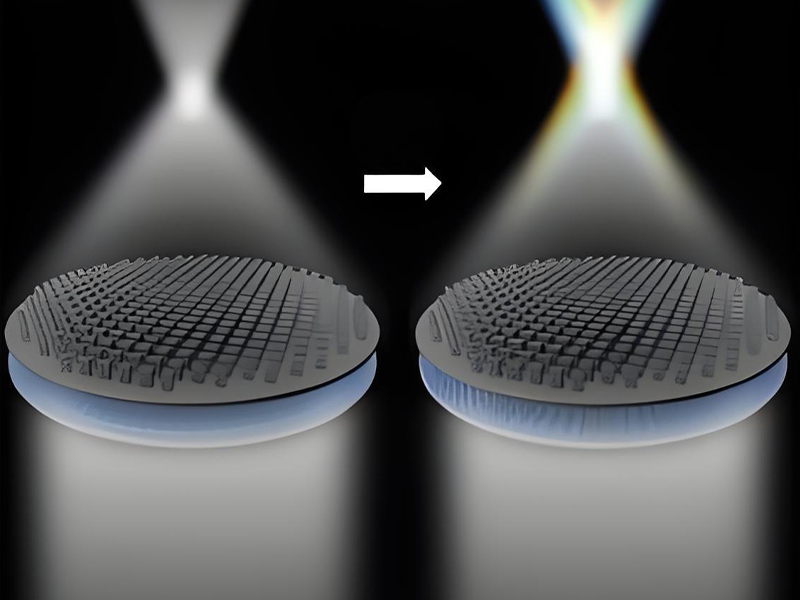Liquid crystal displays (LCDs) have revolutionized visual technology, becoming ubiquitous in modern life from smartphones to large-scale televisions. Central to their operation is the precise control of liquid crystal molecules, which determine light transmission properties. This control is achieved through specialized alignment technologies that guide the orientation of these molecules. Understanding these technologies requires first grasping the lcd liquid crystal display definition as a flat-panel display that uses the light-modulating properties of liquid crystals combined with polarizers to produce images.
This comprehensive overview explores the critical processes involved in liquid crystal alignment, starting with the fundamental material polyimide, proceeding through alignment layer fabrication, examining traditional rubbing alignment techniques, and concluding with advanced photoalignment methods. Each stage plays a vital role in determining the performance characteristics of the final display, including resolution, viewing angles, and response times, all of which are essential aspects of the broader lcd liquid crystal display definition.
Polyimide
Polyimide (PI) serves as the foundational material for liquid crystal alignment layers, playing a critical role in defining the performance characteristics of LCDs. This high-performance polymer exhibits exceptional thermal stability, chemical resistance, and mechanical properties that make it ideal for this application. Understanding its properties is essential for comprehending the broader lcd liquid crystal display definition and functionality.
The chemical structure of polyimide consists of repeating imide groups, which contribute to its remarkable stability. These aromatic heterocyclic units form strong intermolecular forces, resulting in a material that can withstand the harsh processing conditions encountered in display manufacturing, including high temperatures and exposure to various chemicals. This resilience is particularly important in the context of the lcd liquid crystal display definition, as it ensures long-term performance and reliability.
Polyimide solutions, often referred to as polyamic acid (PAA) precursors, are applied to the substrate surface and subsequently cured to form the final polymer film. The curing process, typically conducted at temperatures ranging from 200°C to 300°C, induces imidization—a chemical reaction that converts the PAA into the fully imidized polyimide structure. This transformation is critical, as it develops the material's characteristic properties that enable effective liquid crystal alignment, directly contributing to the functional aspects of the lcd liquid crystal display definition.
The surface energy and topography of the polyimide layer are carefully engineered to facilitate controlled liquid crystal alignment. Through precise formulation and processing, manufacturers can tailor these properties to achieve specific alignment characteristics, such as pretilt angle—the angle at which liquid crystal molecules orient relative to the substrate surface. This pretilt angle is a key parameter in determining display performance, influencing response times and viewing angles, which are important considerations in the lcd liquid crystal display definition.
Modern polyimide formulations are often modified with various additives or functional groups to enhance their alignment properties or enable specific alignment mechanisms. For example, photo-reactive groups can be incorporated to enable light-based alignment, a technology that has gained significant attention in recent years. These advancements in polyimide chemistry continue to push the boundaries of display technology, expanding the capabilities implied by the basic lcd liquid crystal display definition.
The thickness of the polyimide layer is another critical parameter, typically ranging from 50 to 200 nanometers. This thin film must provide uniform coverage across the substrate while maintaining its structural integrity and alignment properties. Achieving this uniformity requires sophisticated coating techniques and rigorous quality control measures, ensuring that each display meets the performance standards expected in the context of the lcd liquid crystal display definition.

Polyimide Molecular Structure
The aromatic imide groups in polyimide create strong intermolecular forces, contributing to its exceptional thermal and chemical stability—properties essential for LCD applications as defined in the lcd liquid crystal display definition.
Key Properties of Polyimide for LCDs
Alignment Layer Fabrication Process
The fabrication of alignment layers represents a critical step in LCD manufacturing, transforming raw polyimide material into a functional layer that can direct liquid crystal orientation. This sophisticated process involves multiple stages, each requiring precise control to ensure the final display meets performance specifications central to the lcd liquid crystal display definition.
The process begins with substrate preparation, typically using glass or flexible plastic materials. These substrates undergo rigorous cleaning procedures to remove any contaminants that could compromise the integrity of the alignment layer. Techniques such as ultrasonic cleaning, plasma treatment, and UV ozone exposure are employed to achieve the necessary surface purity, ensuring optimal adhesion and uniform polyimide application—factors that directly impact the display quality referenced in the lcd liquid crystal display definition.
Following substrate preparation, the polyamic acid solution is applied using one of several specialized coating techniques. Spin coating is commonly used for laboratory-scale production and certain high-precision applications, where the solution is dispensed onto the center of the substrate, which is then rotated at high speeds to achieve a uniform film thickness. For large-scale manufacturing, roll-to-roll coating or slot-die coating methods are preferred, offering higher throughput and better material utilization while maintaining the precision required for the lcd liquid crystal display definition.
After coating, the substrate undergoes a soft baking process, typically at temperatures between 80°C and 120°C. This step removes most of the solvent from the polyamic acid film, preventing bubble formation during the subsequent curing stage. The duration and temperature of this process are carefully controlled to ensure proper solvent evaporation without compromising the integrity of the film or substrate, maintaining the material properties essential to the lcd liquid crystal display definition.
The curing process represents the most critical stage in alignment layer fabrication, where the polyamic acid is converted into polyimide through imidization. This is achieved by heating the substrate to temperatures between 200°C and 300°C for extended periods, often in a controlled atmosphere. The imidization reaction expels water as a byproduct and forms the characteristic aromatic imide rings that give polyimide its exceptional properties. The precise temperature profile during curing directly influences the final properties of the alignment layer, including its mechanical strength, thermal stability, and surface energy—all vital for effective liquid crystal alignment as described in the lcd liquid crystal display definition.
Following curing, the alignment layer may undergo additional treatments to modify its surface properties. This can include plasma etching to adjust surface energy or the application of coupling agents to enhance adhesion. These treatments are carefully optimized based on the specific requirements of the subsequent alignment process, whether rubbing or photoalignment, ensuring compatibility and optimal performance in line with the lcd liquid crystal display definition.
Quality control is integrated throughout the fabrication process, with inline inspections using advanced techniques such as ellipsometry for thickness measurement, atomic force microscopy for surface roughness analysis, and optical microscopy for defect detection. These quality checks ensure that each alignment layer meets the stringent specifications required for high-performance LCDs, upholding the standards implied by the lcd liquid crystal display definition.

Alignment Layer Coating Process
High-precision coating equipment applies polyamic acid solution to glass substrates in a controlled cleanroom environment, ensuring uniformity critical to the lcd liquid crystal display definition.
Alignment Layer Fabrication Steps
-
1
Substrate Cleaning & Preparation
Removal of contaminants through ultrasonic cleaning and plasma treatment
-
2
Polyamic Acid Coating
Uniform application using spin, slot-die, or roll-to-roll coating techniques
-
3
Soft Baking
Solvent evaporation at 80-120°C to stabilize the film
-
4
Curing & Imidization
Conversion to polyimide at 200-300°C forming the final alignment layer
-
5
Quality Inspection & Testing
Verification of thickness, uniformity, and absence of defects
Rubbing Alignment
Rubbing alignment represents the most established and widely used method for orienting liquid crystal molecules in LCD manufacturing. This technique, which has been refined over decades, involves mechanically treating the polyimide surface to create a preferred orientation direction for liquid crystal molecules. Its reliability and cost-effectiveness have made it a cornerstone of LCD production, playing a significant role in the practical implementation of the lcd liquid crystal display definition.
The rubbing process utilizes a rotating roller covered with a specialized fabric, typically composed of nylon or rayon fibers. As the roller contacts the polyimide-coated substrate, which moves perpendicular to the roller's axis, the fibers impart a unidirectional mechanical treatment to the surface. This action creates microgrooves in the polyimide layer, aligning both the polymer chains at the surface and the underlying molecular structure—a phenomenon that directly enables the controlled orientation of liquid crystals essential to the lcd liquid crystal display definition.
Several key parameters influence the effectiveness of the rubbing process, including roller speed, pressure applied to the substrate, fabric type and condition, and the number of passes. These parameters are meticulously controlled to achieve the desired pretilt angle and alignment uniformity across the display surface. The pretilt angle, typically ranging from 0.5° to 5° depending on the display application, determines how liquid crystal molecules orient relative to the substrate, affecting critical display properties such as viewing angles and response times as described in the lcd liquid crystal display definition.
One of the primary advantages of rubbing alignment is its compatibility with large-scale manufacturing processes, enabling high throughput production of LCD panels. Additionally, the technique offers excellent alignment quality with good uniformity, particularly when properly optimized. These characteristics have made it the industry standard for many display applications, from consumer electronics to industrial displays, embodying the practical implementation of the lcd liquid crystal display definition.
However, rubbing alignment is not without limitations. The mechanical nature of the process can introduce contaminants from the rubbing fabric, potentially leading to display defects. Additionally, the technique can cause electrostatic discharge, which may damage sensitive components. Another challenge is achieving consistent alignment across large substrates or in high-resolution displays, where even minor variations can become visually apparent. These limitations have driven research into alternative alignment methods while manufacturers continue to refine rubbing techniques to meet evolving display requirements beyond the basic lcd liquid crystal display definition.
Modern rubbing equipment incorporates sophisticated controls and monitoring systems to address these challenges. For example, automated fabric cleaning and replacement mechanisms minimize contamination risks, while precision positioning systems ensure uniform pressure application across the substrate. Advanced vision systems inspect the rubbed surface for defects, enabling real-time process adjustments and ensuring the high quality standards expected in contemporary LCD production, which continues to expand the capabilities implied by the original lcd liquid crystal display definition.
Despite the emergence of alternative alignment technologies, rubbing remains the dominant method in commercial LCD manufacturing due to its maturity, cost-effectiveness, and reliability. Its continued refinement, including the development of new rubbing fabrics and process parameters, ensures that it will remain relevant for many display applications, playing an important role in the ongoing evolution of display technology beyond the fundamental lcd liquid crystal display definition.

Rubbing Alignment Mechanism
The mechanical rubbing process creates microgrooves in the polyimide layer, establishing the preferred orientation direction for liquid crystal molecules as required by the lcd liquid crystal display definition.
Rubbing Alignment Characteristics
Relative performance metrics compared to other alignment technologies, showing why rubbing remains relevant to the lcd liquid crystal display definition implementation.
Photoalignment
Photoalignment represents the most promising advanced technology for liquid crystal orientation, offering significant advantages over traditional rubbing methods. This technique uses light to induce a preferred orientation in the alignment layer, eliminating the mechanical contact associated with rubbing. As display technologies continue to advance beyond the basic lcd liquid crystal display definition, photoalignment has emerged as a key enabling technology for next-generation LCDs.
The fundamental principle behind photoalignment involves the use of photosensitive materials, typically modified polyimides containing azobenzene or cinnamate groups that undergo structural changes upon exposure to polarized light. When these materials are irradiated with linearly polarized ultraviolet (UV) light, the photoactive molecules undergo either photoisomerization, photodimerization, or photodegradation, depending on their chemical structure and the specific irradiation conditions. This photochemical reaction results in the preferential orientation of the molecules, creating an anisotropic surface that guides liquid crystal alignment—a sophisticated mechanism that expands the capabilities described in the basic lcd liquid crystal display definition.
One of the primary advantages of photoalignment is its ability to achieve highly uniform alignment without the mechanical contact that can introduce defects in rubbing processes. This non-contact nature eliminates contamination risks from rubbing fabrics and reduces the potential for electrostatic damage, resulting in higher yields and improved display quality. Additionally, photoalignment enables more precise control over the pretilt angle and alignment direction, allowing for tailored performance characteristics that meet the diverse requirements of modern display applications beyond the standard lcd liquid crystal display definition.
Photoalignment also offers significant flexibility in patterning, enabling the creation of complex alignment configurations across the display surface. By using photomasks or direct laser writing, different regions of the display can be patterned with varying alignment directions, enabling advanced display features such as multi-domain vertical alignment (MVA) or in-plane switching (IPS) with enhanced viewing angles. This capability has been instrumental in pushing the boundaries of display performance, expanding the functionality implied by the basic lcd liquid crystal display definition.
Several distinct photoalignment mechanisms have been developed, each with its own advantages and limitations. The azobenzene-based systems rely on trans-cis isomerization and subsequent reorientation of the molecules perpendicular to the polarization direction of the incident light. Cinnamate-based systems, on the other hand, undergo [2+2] photodimerization reactions that crosslink the molecules in a preferential orientation. Meanwhile, photocleavage systems use light-induced bond breaking to create surface anisotropy. Each mechanism offers unique properties that make it suitable for specific display applications, demonstrating the versatility of photoalignment in advancing the lcd liquid crystal display definition.
Despite its advantages, photoalignment faces challenges in commercial implementation, primarily related to production costs and throughput. The photochemical reactions typically require precise control of light intensity, polarization, and exposure time, necessitating sophisticated equipment. Additionally, the photosensitive materials can be more expensive than traditional polyimides used in rubbing processes. However, ongoing advancements in materials science and processing equipment are rapidly addressing these challenges, making photoalignment increasingly competitive for large-scale manufacturing and expanding its role in the practical realization of the lcd liquid crystal display definition.
The future of photoalignment looks promising, with research focusing on developing new photosensitive materials with higher sensitivity, improved thermal stability, and lower cost. Advances in light sources, including high-power UV LEDs and laser systems, are enabling higher throughput production. These developments, combined with the inherent advantages of photoalignment in enabling high-resolution, defect-free displays with advanced features, position it as a key technology in the continued evolution of LCD technology beyond the traditional lcd liquid crystal display definition.

Photoalignment System
Polarized UV light induces molecular orientation in photosensitive alignment layers, enabling precise control of liquid crystal orientation that advances the capabilities described in the lcd liquid crystal display definition.
Photoalignment vs. Rubbing Technology
Comparative analysis showing performance advantages of photoalignment in key areas that enhance the modern lcd liquid crystal display definition.
Conclusion: Evolution of Alignment Technologies
The development of liquid crystal alignment technologies has been instrumental in advancing display performance from the early implementations to the sophisticated systems we use today, significantly expanding the practical application of the lcd liquid crystal display definition. From the fundamental role of polyimide materials to the precision of modern alignment processes, each technological advancement has contributed to improved image quality, reliability, and functionality.Electronic shelf labels.
While rubbing alignment remains the workhorse of the industry due to its maturity and cost-effectiveness, photoalignment is increasingly gaining traction, particularly in high-performance applications. The continued evolution of both technologies, along with ongoing research into new materials and processes, promises to further enhance display capabilities, pushing the boundaries of what is possible within the framework of the lcd liquid crystal display definition. As display technologies continue to advance, the importance of precise, reliable alignment techniques will only grow, ensuring that LCDs remain at the forefront of visual display technology for years to come.Related Hydraulic Spare Parts.